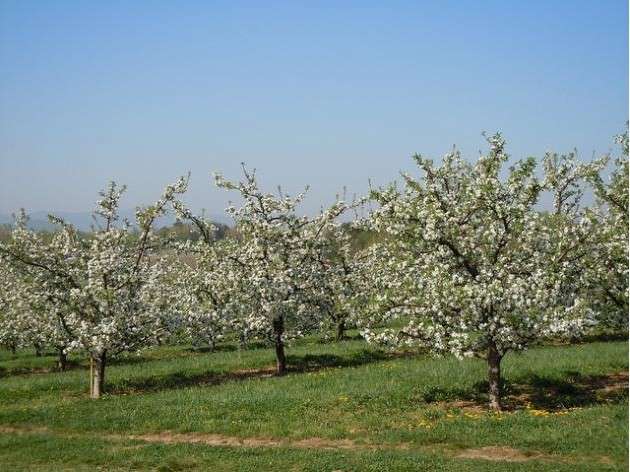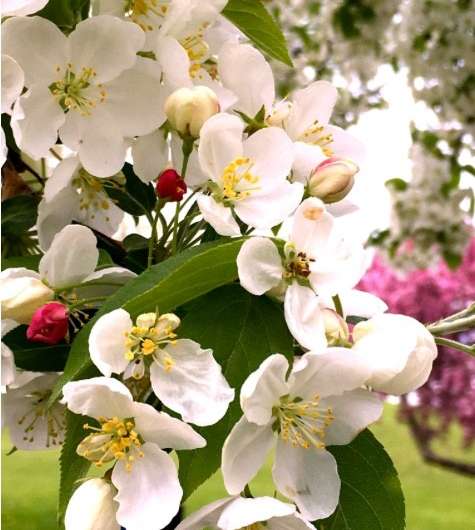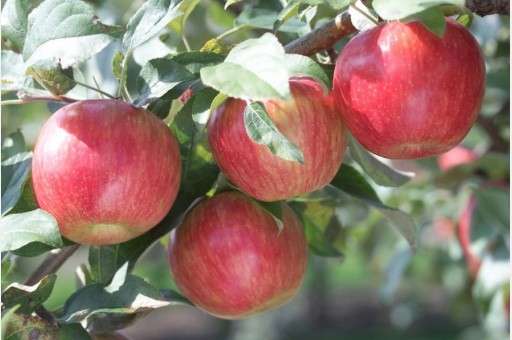Warm winter has put state's apple crop at risk, expert warns

With less than two weeks until the official end of an unusually warm winter in Pennsylvania, the apple crop is in some jeopardy, warns a tree fruit specialist with Penn State Extension.
Unseasonably warm temperatures in December and January and the warmest February on record in the state have advanced fruit tree bud development by about two weeks earlier than normal. That leaves them vulnerable to frost, said Richard Marini, professor of horticulture.
"That's bad news because if these trees bloom too early and we get a hard frost that kills flower buds, we could lose part of the crop," Marini said.
Apples are an important part of Pennsylvania's agricultural industry. According to the U.S. Department of Agriculture, the state ranks fourth in the country in apple production at more than 400 million pounds annually.
The average date of the last frost in central Pennsylvania is about May 10, and in Adams County, in the southeastern part of the state—where most of the tree fruit is grown—the last frost date is April 11, Marini pointed out. And most apple trees in the state bloom at about the same time as the average last frost.
"As a result, we usually have a chance of frost during bloom. For every day we bloom earlier than the average bloom date, the likelihood of a frost increases," he said. "So, if we bloom two weeks earlier than normal, the probability of having a frost during bloom is greater than normal."

Right now, apple tree buds can probably withstand temperatures around 10 degrees Fahrenheit. At full bloom, the blossoms are usually killed by temperatures around 27 degrees. However, the temperature required to kill an open flower will vary depending on a number of conditions, such as how fast the temperature drops, the length of time the minimum temperature is maintained, the overall health of the tree, and the temperatures during the several days preceding the cold event.
But apple trees usually produce many more flowers than necessary, Marini explained. Only about 5 percent of the blossoms are needed to have a good crop—so if a frost kills 80 percent of the flowers there is still a chance for a good crop.
"Also, different buds on a tree do not bloom at the same time," he said. "The earliest flowers may bloom about a week earlier than the latest flowers. Flowers at different stages of development have different critical temperatures. So a frost of 26 degrees may kill the most advanced flowers, but the less advanced flowers will survive."
A trend toward earlier blooming of fruit trees has become obvious to agricultural scientists. After at least five decades of apple tree bloom dates not varying by more than a few days, Marini believes something changed in the mid-1990s. Since then, blooming dates have become increasingly earlier and "erratic."
Commercial apple growers can't do much about changing climatic conditions, Marini conceded, but there are a few things they can do. First, and foremost, they must not plant trees in low spots where cold air settles. And they can switch to growing varieties of apples, such as Rome Beauties, that bloom later. That variety blooms a week to 10 days later than the most popular varieties, Gala, Fuji and Honeycrisp.

"Commercial apple growers are aware of this happening and they know that they used to be able to get away with planting on marginal sites, but not anymore," he said. "The growers are starting to buy new land with better air drainage to get away from frost. They have always planted trees on hillsides and hilltops, but marginal sites that used to be acceptable may not be in the future. They are planting all their trees at higher elevations."
Back to this spring's frost danger to early blooming apple trees, Marini said a seasonably cold March might help a lot.
"If we have a month of cooler-than-normal temperatures, then the bloom may be close to normal—so things can still change," he said.
Provided by Pennsylvania State University



















